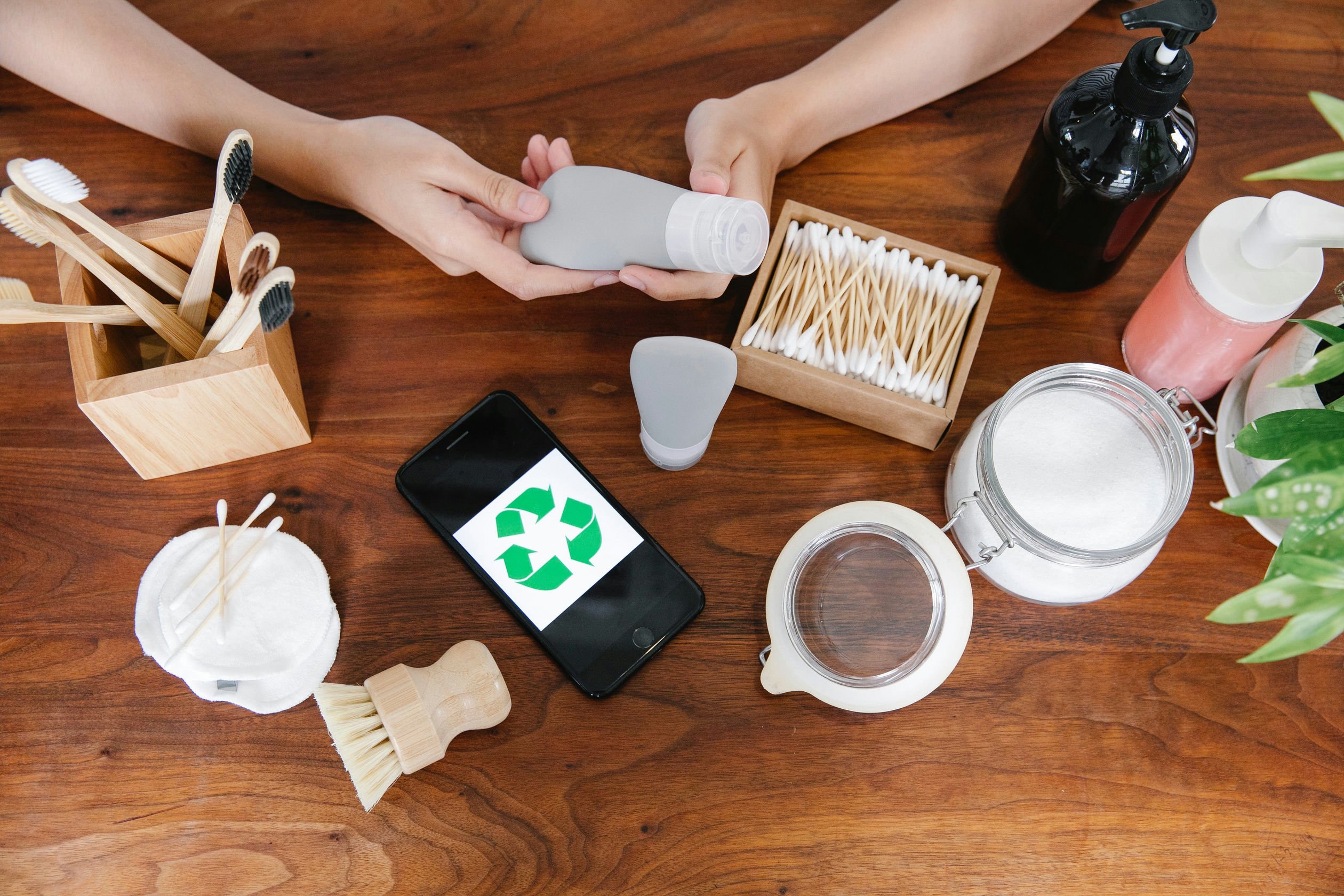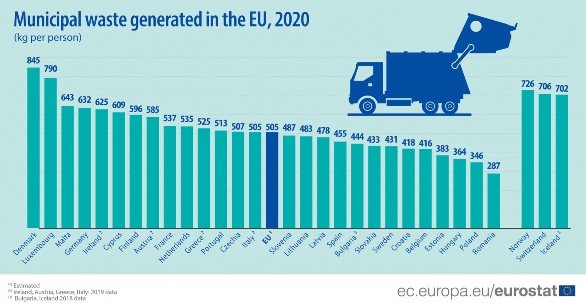
Objectives: Raise learners’ awareness about household waste and equip them with the skills needed to reduce the amount of it, use it for other purposes or recycle it correctly. Improved knowledge of different types of household waste and enhanced ability to handle it (find another usage or, if that’s not possible, recycle it correctly.
Expected results: Participants will reconsider before discarding household items whether it’s possible to reuse these items.
UNIT 1
Introduction
In 2020, 505 kilos of municipal waste were generated per person in the EU; it is 4 kilos more than in 2019 and 38 kilos more than in 1995 (municipal waste is the garbage that is collected by municipal authorities and disposed of through waste management systems, it includes waste from households but also the one produced by shops, offices and public institutions). At the same time, around 50% of municipal waste is recycled, which means that the rest most probably gets incinerated or ends up at a landfill. Household waste can include non-hazardous materials (such as food scraps, paper, bottles) and hazardous things such as batteries, detergents, old medicines and other chemicals. It is important to be aware of this difference and to know how to handle them appropriately.

